Namibia remains the destination of choice for many international hunters, offering various reasons why this African destination remains such a sought-after game hunting location. Besides exceptional game hunting locations, species, and experiences, Namibia also ticks the boxes regarding tourist attractions, should your Namibia hunting safari end early.
[DYNAMIC-BLOGTABLEOFCONTENT]
Key Takeaways
- This African country remains a choice destination for game hunting enthusiasts wanting to experience a safe and affordable hunting destination with a wide range of species available when hunting in Namibia.
- While a hunting safari may last for a certain amount of days, a hunter may be lucky and target his chosen prey sooner, leaving them with free days to fill.
- Luckily, Namibia has many tourist attractions to visit and enjoy.
- From beautiful beaches, delectable culinary treats, adventure activities, and mesmerizing museums, Namibia has something for everyone.
- As a safe travel destination, the country offers easy access to numerous tourist attractions for would-be tourists, just do your homework first and see what is available in your specific hunting area and surrounds.
Namibia: A Popular Choice
Choosing a big game hunt in Namibia is one of the most popular choices international hunters make due to reasons such as, but certainly not limited to:
- Namibia is affordable and safe for hunters
- Namibia is the only country that offers all the members of the Dangerous 7 in Africa
- Cheetah hunting (while an opportunistic hunt) is only legally allowed in Namibia
- Namibia is well-known for small antelope such as the Damara Dik-Dik, as well as the Hartman’s zebra.
- While Namibia is mostly arid and semi-arid, the Caprivi Strip (Zambezi Region) offers aquatic dangerous game hunts for Hippo and Crocodile, as well as Cape Buffalo and elephant hunts.
Namibia Hunting Safaris for Elephants
Most available elephant hunts when hunting in Namibia, are for a period of 14 to 21 days, full hunting days excluding travel days.
What does this mean for the international Elephant hunter booking an Elephant hunting safari in Namibia?
Firstly, the hunter needs to decide what type of elephant hunt is best suited to his/her needs and which area will be best suited. i.e. A trophy elephant hunt, a non-exportable elephant hunt, or in some instances, drought relief and problem elephant hunts become available. The latter two elephant hunts usually become available at very short notice and often at discount rates. The hunter will need to be flexible and available to board a plane at short notice to book that specific dangerous game hunting safari.
Trophy elephant hunting in Namibia takes place in a few key areas, such as Bushmanland and the Caprivi Strip. When booking a trophy exportable elephant hunt, and if hunting on a budget, the hunter will need to factor in the additional costs which are often not considered at the time of booking the hunting safari such as:
- Dip and Pack
- CITES Permits
- Shipping Costs
- Taxidermy
These additional costs relating to exporting elephant trophies can easily amount to thousands of US Dollars.
Trophy elephants in Bushmanland, while the elephants are not as plentiful, are far larger than those elephants found in the Caprivi. Over 60 pounds is achievable, and the cost of the elephant hunt at current prices will be approximately US$ 55,000.
In the Zambezi Region (Caprivi), an average-sized elephant trophy is 35 pounds, and the cost of the hunting safari will be US$ 35,000. The area is full of mature bulls that move in from Botswana crossing the Chobe River.
Secondly, the hunter needs to know irrespective of the type of elephant hunt, the hunter may “get lucky” and harvest the trophy within two or three days into the hunting safari. So, the question then asked is, what do we do with the remaining days of the game hunting safari? Are there other non-cites animals that can be hunted at short notice?
In Bushmanland, there are additional available antelopes such as Kudu, and Eland, and smaller antelopes such as Duiker. However, due to poaching, the animals’ numbers are not at acceptable levels. Bushmanland offers some incredible leopard hunts with outfitters having 100% success ratios and harvesting huge cats. However, a leopard hunt at short notice is not always an option due to CITES permits and very limited quota.
In the Caprivi, Chapman’s zebra are readily available and when hunting Namibia offers them at an affordable +- US$ 500 for a non-exportable zebra. When looking for further game hunting Namibia is also home to the Red lechwe that are slowly making their way back in from Botswana, along with common antelope such as impala. If the outfitter has any tags available at short notice, the Cape buffalo, crocodile, and hippo may be available for a Namibia safari hunt.
Thirdly, when booking the Namibia safari hunt, it is always advisable to consider the option that the elephant hunt may be over quicker than expected and plan as to what is best to do with the remaining days. Make no mistake, spending a few days just relaxing in Namibia, enjoying incredible food, and cold beverages, swapping adventure tales, and enjoying all that Africa has to offer is also an option!
On our recent Namibia hunt, we encountered this exact dilemma. Our safari was booked for 8 nights and 7 full days of elephant hunting in Bushmanland.
At the outset, the elephant hunt was supposed to be a drought relief elephant. However, the government at short notice issued four permits for problems elephants. On one of the largest privately owned reserves in Namibia, approximately three hours away from Bushmanland, a herd of around 80 elephants were on the property. The land owner had originally purchased approximately 40 elephants. The numbers now, due to breeding and elephants joining from Bushmanland and surrounding areas, were now at approximately 80, over the carrying capacity of the estimated 80,000 acres.
Bull elephants were now breaking through the fences, entering neighboring properties, destroying crops, and property, and were becoming a threat to local ranch owners and villagers. Not a great formula to support neighborly relations. The Namibian government originally did not want to issue the permits as it was their opinion that the elephants belonged to the government. When the property owner then advised the department to come and fetch approximately 40 elephants, the tune then suddenly changed. Following meetings between ranch owners, government representatives, and the African outfitters, permits were issued, and it was “game on.” We managed to harvest a spectacular bull on day three. We tracked the elephants from where the fences had been broken into the thick bush for a few miles. Bushmanland elephants are enormous and we could see the head and back of a lone bull over the bushveld. Stalking in, we met the elephant and took a frontal brain shot at 18 yards using the Verney Carron 500 NE loaded with Hornady DGS 570 grain solids.
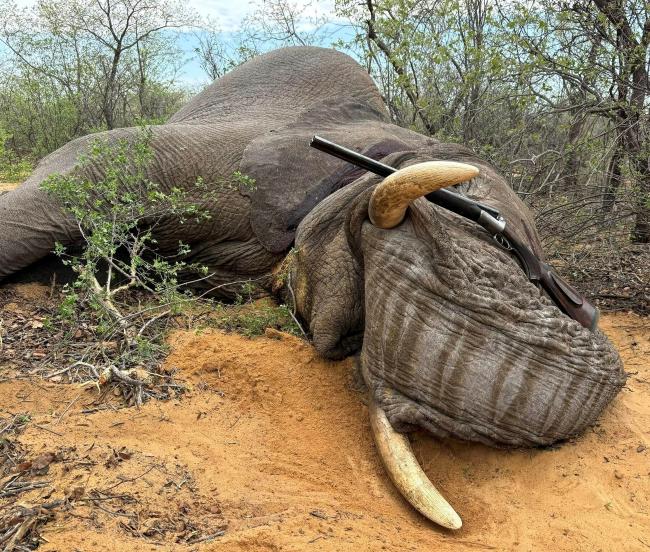
The only problem was, that for some unknown reason when squeezing the trigger, both barrels went off at once hurling a combined weight of 1140 grains through the air with some serious and unexpected recoil. I am not sure who got the bigger fright, me or the elephant. The first shot was a little low, which I will argue was due to the double discharge, (ignoring the adrenaline rush LOL!) but went under the brain into the spine anchoring the elephant. With the two follow-up shots which is always done as standard practice when big game hunting, both barrels again went off simultaneously. The net result was that I nearly landed on my butt due to the energy displacement. It must have been quite a sight!
An elephant hunt is an emotional experience and a privilege, and we were most fortunate to have had the experience.
We had a few weeks previously been on a hippo and Cape buffalo hunt in the Zambezi Region, so we decided at short notice to leave the bushveld and explore Namibia following the Elephant hunt.
Things to do, Places to go, and Experiences to Enjoy when Hunting in Namibia
Bushmanland traveling by road transfer to and from the Capital city of Windhoek takes between 6 and 7 hours, depending, of course, on the road conditions and the season of your Namibia safari hunt. On completion of the safari should you wish to travel and explore, herewith are a few options, information, and suggestions.
Windhoek
Tourist activities are highly affordable to foreigners due to the weak exchange rate between the Namibian Dollar, which is linked to the South African Rand, and international currencies such as the Euro, US Dollar, and British Pound.
Windhoek is the social, economic, and cultural center of Namibia. It boasts an extraordinary craft center, nature reserves, and Botanical gardens. If museums are on the list, be sure to visit the National Museum of Namibia and Trans-Namib Railroad Museum.
Hotels cater to international visitors and hunters and have secure lock-up facilities for firearms with incredible breakfasts. Dining at Joe’s Beerhouse situated in central Windhoek is a must and features classic cuisine such as gemsbok and springbok steaks, fresh line fish such as hake, sole, and kabeljou, and a wide variety of local beer. If you looking for something a little more upmarket, be sure to visit The Butcher Block which boasts a wide variety of dishes.
Traveling in Windhoek is quick and affordable. Just download the Yango App on your smartphone (Namibia’s version of Uber). A seven-mile trip will cost the traveler a mere US$ 2.
When hunting in Namibia, make sure to switch any foreign currency to the local Namibian Dollar, or to the South African Rand which is accepted throughout the country.
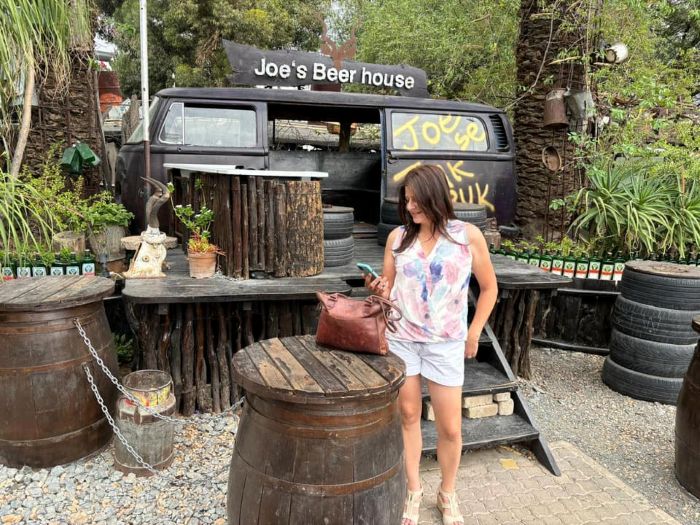
A Visit to Swakopmund
Swakopmund is situated 163 miles from Windhoek. A four-by-four vehicle is not required and there are many service providers for car rental. Renting a Volkswagen Polo, or similar at current rates will cost on average US$ 23 per day.
Hotel rates for a four-star, breakfast included can be budgeted for at US$ 140 per day for an executive room with a sea view. Cuisine in the city ranges from a variety of fresh seafood (depending on the season) to game meat and dishes with a German influence.
Swakopmund is surrounded by the Namib Desert and the Atlantic Ocean offering a wide range of activities including:
- Desert Camel Rides
- Sandboarding on the Dunes
- Quad Bike rides through the Namib Desert
- Deep Sea Fishing Charters
- Living Desert Tour
- Four by Four Excursions
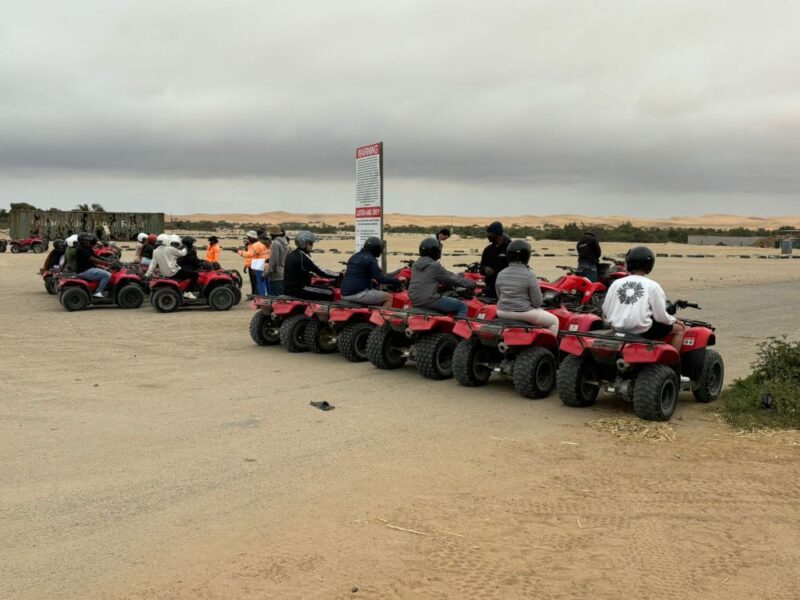
Swakopmund also boasts a superb German bakery and a visit to the Kristall Galerie is a must. For visitors who enjoy a few cold beverages on the beachfront, two large 500ml Castle Lite Draft Beers at The Reef Bar cost a mere US$ 3. A bonus at these rates is that hotels are within walking distance, so no driving is necessary.
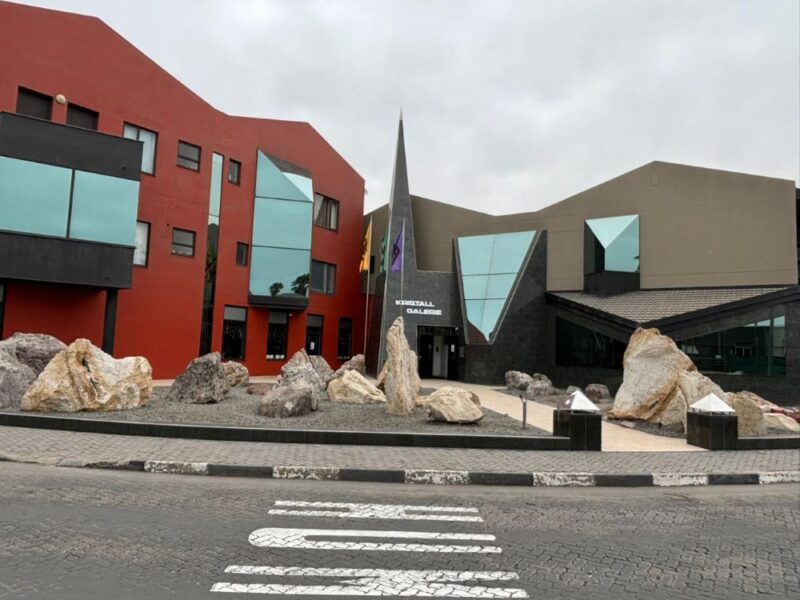
A Drive South to Walvis Bay from Swakopmund
Situated only 22 miles from Swakopmund, is the famous port of Walvis Bay. The southerly drive from Namibia’s adventure capital of Swakopmund down to Walvis Bay is a safe and scenic one, through the Namib Desert.
Founded in the 1790s by Dutch Settlers from the Cape of Good Hope, this scenic coastal town has been governed by the British, Germans, and South Africans at one time. It is Namibia’s largest coastal town and the country’s second-largest city, as well as the country’s largest commercial port, with 13 commercial berths as well as a dedicated berth for passenger and cruise vessels.
The town itself is a culmination of old and new, with quaint old curio shops paired with several exquisite restaurants well worth sampling!
The city offers tourists various activities to keep them entertained and enthralled, including scenic whale and seal tours and for the more active and adventurous kayaking, windsurfing, and kite surfing. The largest dune in the area is Dune 7, while the Walvis Bay lagoon is a haven for bird life in the area.
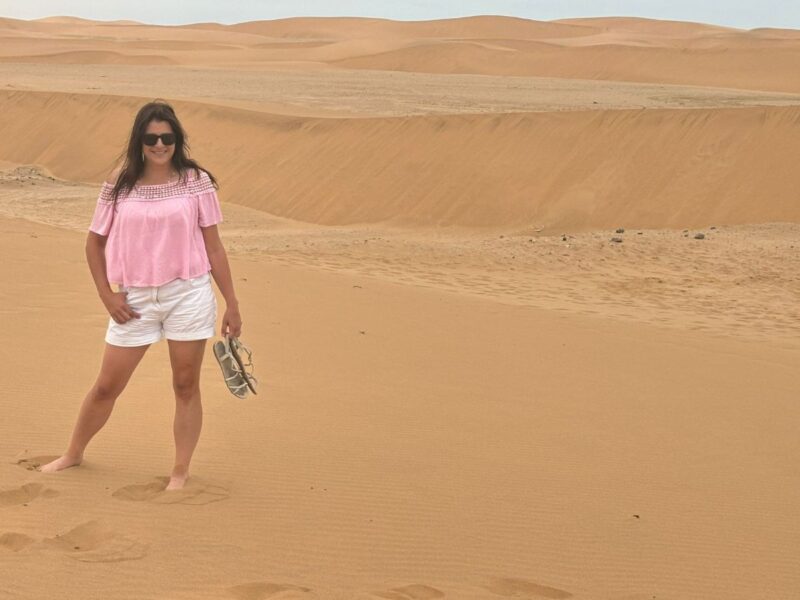
A Coastal Drive North from Swakopmund to Henties Bay
Henties Bay, or Hentiesbaai, is another Namibian destination worth visiting, and only 44 miles north of Swakopmund.
This holiday town bustles over the summer season and is largely known for its range of natural beauty including stunning beaches, as well as being a prime fishing spot. This is the place to come to get away from it all while enjoying a lovely beach holiday but be warned the water is quite chilly!
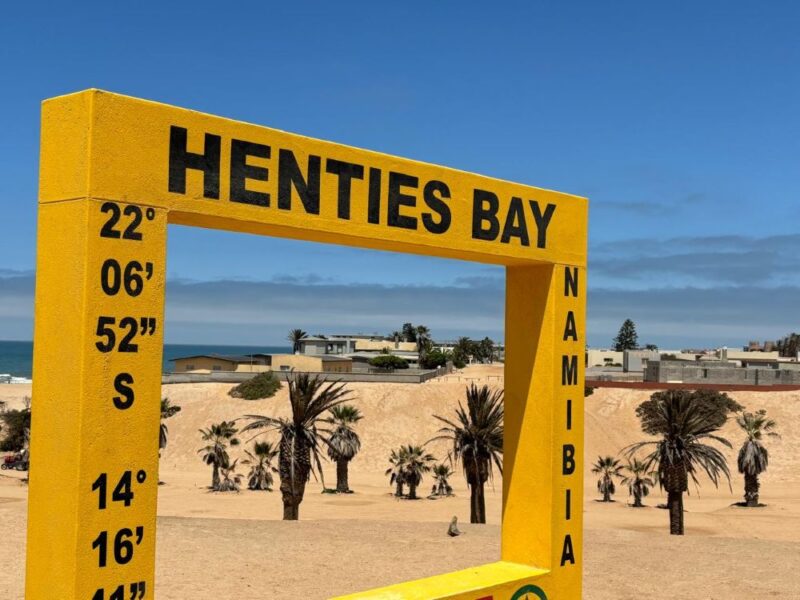
For golfers, the Henties’s Bay Golf Course is truly something spectacular to experience, in the form of a 9-hole golf course in a dry river bed.
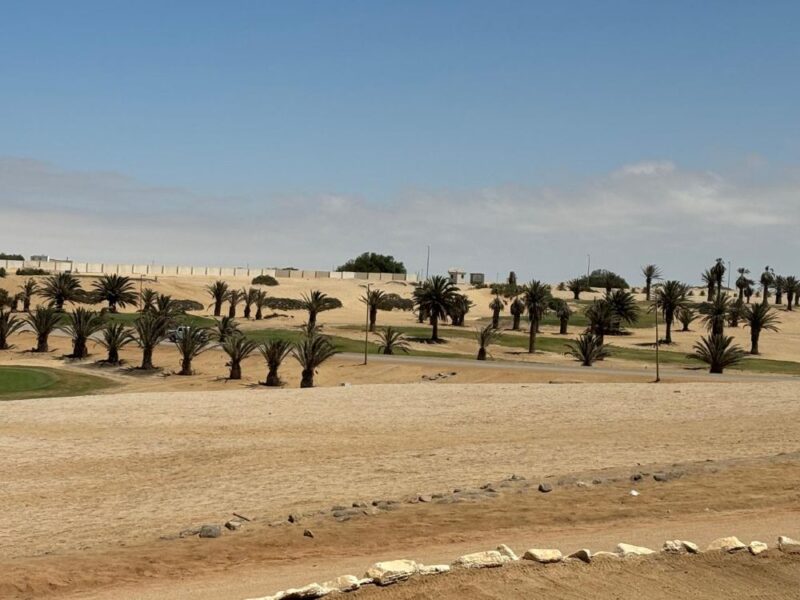
Frequently Asked Questions
Is elephant hunting legal in Namibia?
Yes, elephant hunts are legal, but stringent quotas and regulations are in place and need to be adhered to.
Why are elephant tusks so valuable?
Elephant tusks, made from ivory, have been a sought-after item for centuries. Man uses them in many different ways, including trinkets, ornaments, and a range of luxury items such as jewelry, cutlery, and even piano keys.
Are elephant hunts dangerous?
Elephant hunting is a dangerous pastime, with the world’s largest land mammal being a member of Africa’s Big 5 and Dangerous 7.
Is Namibia a good hunting destination?
Yes, Namibia hunts are some of the best worldwide, with this diverse destination being the only one in Africa to offer cheetah hunting, as well as the only destination where all members of Africa’s Big 5 and Dangerous 7 can be hunted.
What makes Namibia a popular game hunting destination?
There are several reasons why hunting in Namibia remains so popular. Namibia is a value-for-money destination, it is seen as safe, and the diverse range of game hunting species on offer is exceptional! From dangerous game hunting to African cats such as the cheetah (Namibia is the only destination where the cheetah can legally be hunted) to tiny antelopes and large big game antelopes, Namibia safari hunts are truly worth experiencing. Namibia is also the only country where all members of the Big 5 and Dangerous 7 can be hunted.
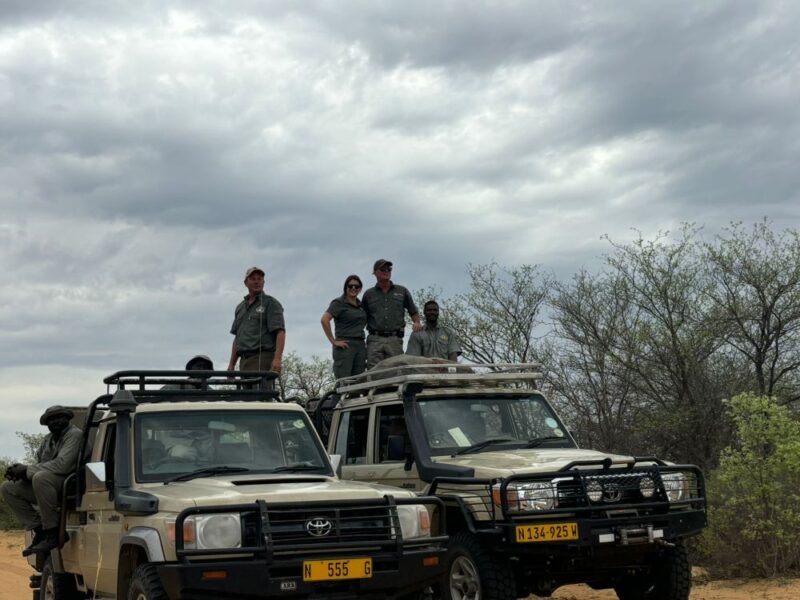
Conclusion
When hunting Namibia remains a choice destination. Whether it’s elephant hunts in Bushmanland or hippos in the Caprivi, this diverse destination ticks all the boxes in terms of an all-encompassing game hunting location. Add to this the amazing array of tourist attractions on offer and it is not difficult to see why hunting in Namibia continues to grow in popularity.
To check out the latest Namibian hunts available, visit our Find A Hunt page.
Author: P.C. van Wyk
